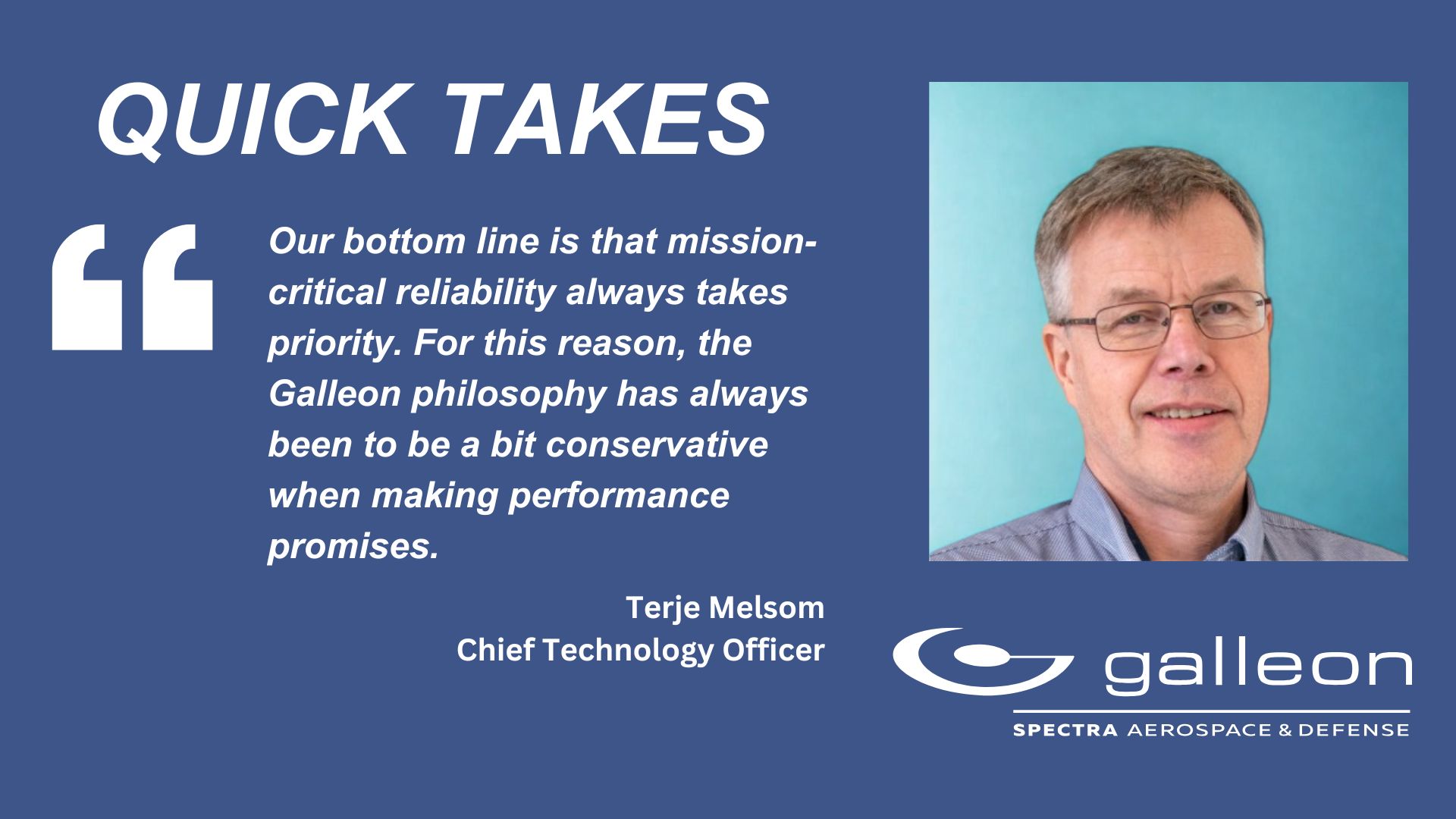Galleon Embedded Computing’s novel approach to designing solutions for extreme environments
June 2, 2025
In this Q&A with Galleon Embedded Computing CTO Terje Melsom, he shares the company’s philosophy on building rugged, reliable computing solutions for diverse environments while prioritizing mission-critical reliability.
Q: Before becoming Chief Technology Officer at Galleon Embedded Computing, what experiences shaped your approach to embedded computing technology, and how have you applied those lessons to the company’s global operations?
A: I worked for VMETRO and Curtiss-Wright Defense Solutions, where I was developing boards and system-level solutions based on the VME and VPX families of standards. We clearly saw many advantages building commercial, off-the-shelf (COTS) and Modified COTS systems around these standards for larger systems. But we also knew that the overhead in such backplane-based standards added cost and made it impossible to build the small, stand-alone solutions customers were asking for.
When we launched Galleon Embedded Computing, our approach was to start from concepts for compact mechanical packaging and explore how we could maximize COTS modules to build storage-centric, embedded computers that fit within the available space. This resulted in the very successful XSR and G1 server product families.
Both are based on proprietary packaging and power supply design while taking advantage of COTS I/O modules and solid-state drives. For the XSR Server, we selected industry standard COM Express processor modules. With the G1 microServer, we used a chip-down processor design on the main board to make the systems as compact as possible.
A standard like VPX has an important place when the target is to build larger and more scalable systems, but that was not our initial goal when starting Galleon Embedded Computing. By being more flexible, it sets us up for future innovations that can be pretty exciting.
Q: Galleon Embedded Computing products operate in extraordinarily diverse environments — from ocean depths to space. How does this range influence your R&D strategy, and what engineering challenges does your team overcome to ensure reliability in these extreme conditions?
A: Our initial aim was to build highly reliable products for airborne applications, and this scope has been expanded to cover ground-based platforms. The core functionality provided by Galleon Embedded Computing products centers around general-purpose computing and is just as applicable at 6,000m depth and at 400km altitude — and everything in between.
The starting point was to create an extremely rugged product with good EMC performance developed to meet airborne requirements. The design changes required to meet ground application needs were limited to some power-supply protection and to adjust packaging to support some wash-down and light immersion requirements. There was also added focus on cooling and a lot of new environmental qualification testing. For the unmanned underwater vehicle (UUV) and space applications, we work closely with the customers to allow them to qualify our standard technology for use in their platforms.
Q: What is your philosophy on innovation at Galleon Embedded Computing? How do you balance developing cutting-edge technology with maintaining the mission-critical reliability customers depend on?
A: Our bottom line is that mission-critical reliability always takes priority. I’ve learned from experience that trying to squeeze the last drop of performance out of cutting-edge technology can be extremely expensive, potentially leading to seemingly endless loops of redesign, design tweaking and failure of long-term stability tests. For this reason, the Galleon Embedded Computing philosophy has always been to be a bit conservative when making performance promises.
Q: What role does customer collaboration play in Galleon Embedded Computing’s development process?
A: Our design philosophy to develop products based on industry standard modules and protocols is motivated a great deal by the importance and value of customer collaboration. Our COTS product platforms are designed to support the development of Modified COTS solutions that match customer requirements with limited redesign efforts. We always start by acknowledging that the customer knows the most about the challenges and the problems that need solving. We communicate closely with our customers about their technology needs going forward so that we can strongly support them with our next generation of products. They also give us a great deal of insight into new product directions we may want to pursue.
Q: What do you see as the future of embedded computing and Galleon Embedded Computing’s place in the industry?
A: The embedded computing landscape is experiencing fundamental transformation that aligns perfectly with Galleon Embedded Computing’s strengths. The global embedded computing market is expected to reach US $189 Bn by 2032, driven by edge AI and industrial automation trends.
Edge AI will enable devices to process data locally and make real-time decisions without cloud dependencies, directly benefiting our compact, rugged platforms. That makes our XSR and G1 families ideally positioned for growth.
Our conservative approach to performance and focus on mission-critical reliability addresses the industry’s growing emphasis on dependability. While others chase cutting-edge performance, Galleon Embedded Computing’s proven technology platforms and flexible packaging enable confident deployment across diverse environments — from autonomous vehicles requiring massive processing power to space applications. This positions us to capture significant growth in this rapidly expanding market.


